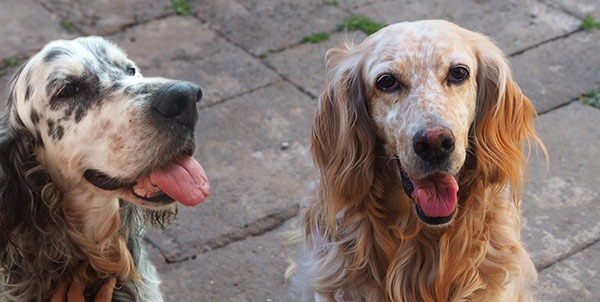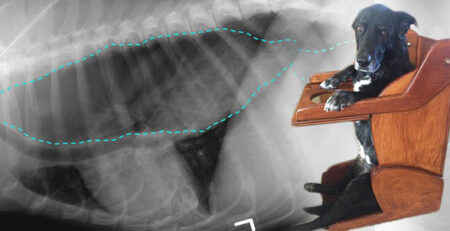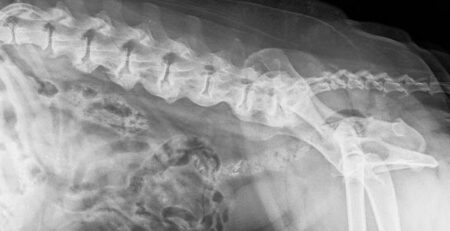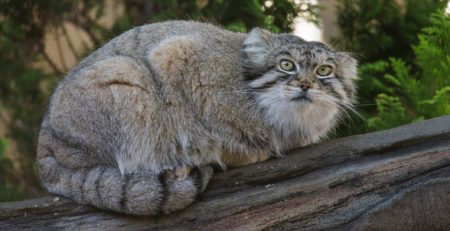The English setter: an exuberant and lively dog but when necessary endowed with self-control like a true British lord
The earliest records of the English setter date back to the 1500s.
Robert Dudley, Earl of Leicester, was accompanied on hunting trips by dogs probably derived from spaniels imported from Spain during the English conquests.
These dogs are to be considered the ancestors of today’s English setters that we all know today.
What is Setter
The name Setter is derived from To Set meaning “tostand still,”“to point or stare.”
In fact, the peculiarity of setters is to locate prey, position themselves in a statuesque and silent halt, and approach close to the ground with slow movements, thus enabling the capture of game.
The English setter from its origins to the present day
Pontus and Old Moll, a blue belton male and female, is the progenitor pair of the modern English setter, and it was their owner, Edward Laverack, who through crossbreeding and selection succeeded in fixing the breed’s distinctive traits in 1825.
Endowed with a magnificent, slightly wavy, silky and fringed coat, the English setter can appear in variants:
- blue belton, black and white tending to blue
- orange belton, white and orange
- lemon belton, white and light orange
- liver belton, white and dark brown (called liver)
- tricolored, white with dark spots and flecks
where belton means the speckling of contrasting color that makes its appearance on the white background during puppies’ growth and up to nine months of age.
How many types of setters are there besides the English setter
There is the tawny Irish setter, the red/white Irish setter and the Gordon setter.
The selection of the Irish setter or
Red Irish Setter
, characterized by a wonderful mahogany-red coat, seems to date even earlier than that which occurred for the English setter to which it is a close relative.
The red-white IrishSetter differs from the fawn in its coat, which is predominantly white with a few red spots.
The Scottish setter or
Setter Gordon
, on the other hand, owes its name to the 4th Duke of Gordon, who began officially selecting the breed in 1827 but its origin dates back to 1620 when it was known as a “black blazed setter dog.”
In fact, its coat is black and tan in color, and its build is massive, definitely heavier and more powerful than that of the English and Irish.

What character English setters have
That slight squint, let’s face it, makes the setter look a little dumb.
And that flat-headed skull doesn’t help either, but in reality the setter is an extremely intelligent dog with a calm and sensitive disposition, capable of creating a very deep bond with its human.
Predatory motivation is inherent in the DNA of the setter, a breed selected precisely for hunting that we condemn in its entirety.
However, it is necessary to make a setter happy by giving him the opportunity to do what he was born to do but with common sense and without the need to sling double guns and pollute the environment.
How to make a setter happy and gratified
The setter needs exercise, detests loneliness and isolation, and is a joyful and playful dog.
He loves being outdoors, running like the wind, digging tunnels and tumbling through mud.
The best way to keep a setter happy is to keep him engaged in play sessions and sporting activities that stimulate his keen sense of smell and satisfy his scouting vocation.
If you are a loafer devoted to couch and TV, the setter is not the right dog for your routine no matter how affectionate and patient it is, it is also suitable for family life.
Good nutrition, regular periodic checkups and lots of brushing
A proper, rich and well-calibrated diet undoubtedly contributes to the maintenance of the setter’s vitality, athletic prowess and overall health.
Periodic checkups at your trusted veterinarian should be done to monitor the occurrence of diseases that most frequently afflict this breed, identify potential risks and take preventive measures:
- hip dysplasia
- progressive retinal atrophy
- dermatological diseases
- otitis
Precisely because it is a dog that loves to run around outdoors, the setter has a remarkable ability to accumulate dust and spikes (theforbs) in the fur (especially between the bangs, behind the ears and in their lower part).
Therefore, it is good to get him accustomed from an early age to having his hair brushed to remove dirt and debris, loosen knots and keep his coat healthy and shiny.
The long, pendulous ears also require proper cleaning and care to prevent infections and ear problems.
To make periodic checkups for your setter, contact the veterinary doctors on our staff who are always available to you.
We would also like to remind you that Clinica La Veterinaria is always open h24 every day including holidays and with First Aid service from 8 pm to 8 am.
For the joy of seeing them HAPPY
Ph. Tiziana Genovese | In photo Lady Mirta and Lord Camillo.











